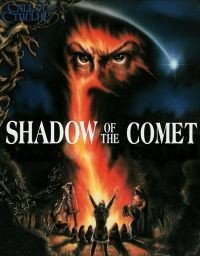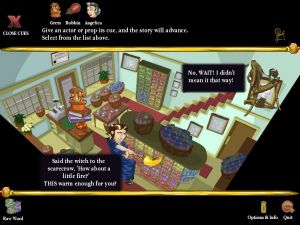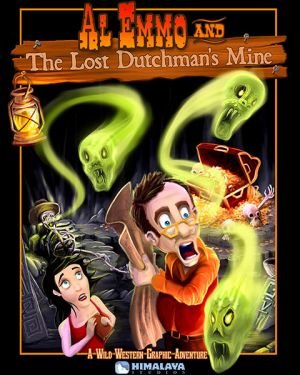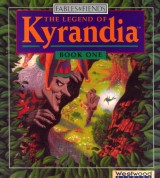Review for Heavy Rain
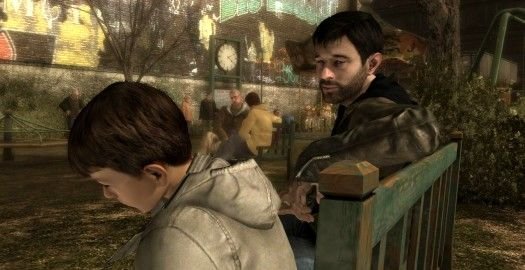
Five years ago, Quantic Dream unveiled a groundbreaking game called Fahrenheit (or Indigo Prophecy). It was an ambitious concept, focusing almost exclusively on story, character, and freedom of player choice, trimming much of the actual gameplay to Simon-style sequences and button mashing. While the novelty was enthusiastically embraced, Fahrenheit was nevertheless a flawed first attempt at an “interactive drama”, falling short of its bold promises and abundant potential. This didn’t stop me from enjoying it completely, however, though most of my thoughts as I finished the game began with “This could have been incredible, if only they had…”.
After years of hype as a flagship PlayStation 3 exclusive, now Quantic has released Heavy Rain, a game that builds on its predecessor's achievements and addresses almost everything that went wrong. While the end result still isn’t perfect, it is easily one of the most fully realized interactive narrative experiences available. As long as you don’t mind the fact that you’ll do far more watching than playing, Heavy Rain is a beautiful example of just how emotionally involving games can be. It’s certainly not a traditional adventure by any means, and you may not control the story as much as you’d like, but that won’t stop you from becoming deeply attached to its characters and engrossed in their plights.
The opening story features Ethan, a down-on-his-luck architect whose son gets kidnapped by the Origami Killer, a sadistic psychopath who kidnaps young boys and drowns them in rainwater, leaving an ornate paper figure on the body as a calling card. The victims are kept alive for a few days before that, however, and Ethan receives a box of origami figures which, when unwrapped, provide an address he must visit to perform various “trials”, several of which seem to be inspired by the Saw movies. The mandate is clear: Ethan will learn where his son is being kept if he successfully performs the trials, but if he fails his son becomes the latest victim.
While Ethan desperately begins playing the killer’s game, Heavy Rain flips back and forth between three other characters as well, all of whom are following their own trails to finding the Origami Killer. Norman, the FBI profiler, uses a sci-fi pair of sunglasses to analyze clues at crime scenes. Scott, the private investigator, questions the families of previous victims to see if there’s anything the police missed. And Madison, the photojournalist, follows a few leads of her own. Their methods and personalities are radically different from one another, giving the same murder investigation a diverse feel. It might seem like the constant alternating would break the flow of the story somewhat, but the game cleverly chooses its moments to shift characters and the four narratives interlock nicely, even if the characters rarely interact at all with each other.
As different as the four scenarios are, they all control the same way. The left analog stick controls which way your character faces and the R2 button is pressed to walk. As you explore the various environments, icons will appear that prompt actions (which fans of Fahrenheit will immediately recognize), and the game does a good job of trying to keep the motion-based actions at least partially related to what you see on the screen. Stepping carefully at one point alternates between the R1 and L1 buttons, for example, and jerking the controller up quickly is used for anything from jumping over an obstacle to downing a shot of scotch. This simulated movement doesn't make you feel like you’re performing the actions yourself, of course, but it does make them a little more fun than hitting arbitrary buttons. Overall the controls are fairly intuitive, but having to constantly keep the R2 button pressed to walk seems a little clumsy and unnecessary, and more than a few times I found myself going the wrong way due to an abrupt or awkward camera angle.
Unlike more action-oriented games, this lack of precise control never puts your character in peril. Heavy Rain has some wonderfully tense moments of danger, but they’re all at very specific, scripted moments. Whether you’re fighting with an armed robber in a convenience store or fleeing from the police, the action unfolds in what can loosely be termed a Quick Time Event. A button or direction icon will appear on the screen, and you’ll have only a moment to perform the correct action before failing. While I find most Quick Time Events irritating, I really enjoyed Heavy Rain’s, in part because these actions also match what happens on screen. Tilting the right analog stick to the left in order to make your character dodge in that direction has a more tactile feel to it than just pressing the square button, after all. But it’s also because, while failing in most games ends in a Game Over, missing a prompt in Heavy Rain means the game simply takes a slightly different direction. These segments are very forgiving, and failing one or two almost never results in losing the whole scenario, though it’s fun to see how the action changes based on how well you’re doing. You may still win a fight without ducking that one time, but you could wind up visibly worse for wear because of it.
Other precision-based events happen occasionally as well, such as when Norman has to carefully climb his way up a slippery slope. In these cases, the game prompts you to press and hold certain buttons in a sequence, and sometimes tap one rapidly while keeping the others pressed. Both types of activity are fairly frequent, and most scenes in the game have at least one or two, giving your character’s explorations a more dynamic feel. Experienced action gamers should pass them all with only a little challenge, though the difficulty level can be set lower if they prove too frustrating.
The action sequences highlight the most debatable aspect of this unusual game: how much influence do you, the player, really have over the story? The back of the box raves that “your smallest decisions can change everything” and “every action you take has consequences.” This is only partly true. The story progresses much the same way for most of the game no matter what choices you make or which Quick Time Events you win or lose, as a lot of the actual game-changing options occur only towards the end. It is possible for Ethan to fail his trials, while other characters can find themselves unable to solve the case in time or even die before you’ve seen all the scenes they can appear in. Yet just because one fails doesn’t mean the others can’t succeed, so Heavy Rain simply continues on with whoever is left when that happens. Norman may die in the course of his investigation, for example, but that won’t necessarily stop Madison from solving the case, and each character has multiple possible endings, allowing one or more to have happy endings even if the others don’t.
There’s a lot of game before you get to these endings, however, or even to the critical points where you can affect the final outcome. The story is very flexible, and always seems to find a way to catch you up when necessary. Lose a fight early in the game, and all you really have to worry about are injuries. Fail to find a critical clue with Norman, and that clue will fall into his lap some other way. You may miss out on a Trophy achievement, but it ultimately has no bearing on the plot. So what’s the point of offering so much player control when so little of it is significant, you may ask? That depends on how much you enjoy the idea of directing your own story. In the prologue scene with Ethan, I grabbed some coffee, explored my house, and then lay on the grass in my backyard waiting for my wife to come home. On my second playthrough, I chose instead to go to my office and do some work on the building I was designing. Neither choice had any major effect on the game, but the two experiences were very different in their own right, and some dialogue changed when my wife asked if I had gotten any work done while she was gone.
Another stage gives you the option of insisting your son does his homework while you cook his dinner, or you can just grab a beer from the fridge and shoot hoops in the rain while your son watches TV and scrounges some potato chips for himself. This scene may sound boring; after all, nothing dramatic happens in it other than a father looking after his son after school. But it has the dual effect of establishing what sort of character you want for Ethan and creating a connection with his son that makes his fate far more meaningful to you than if the boy simply disappeared in the first chapter. Is Heavy Rain about a good father who would do anything to save his son? Or a neglectful, depressed father trying to redeem his poor parenting? Will Norman stop an overly aggressive police officer from beating a suspect, or will he stand idly by, deciding it’s for the greater good? Is Scott brave enough to protect a prostitute from an aggressive john, or will he rationalize that it’s none of his business and leave her to her fate? Unlike most games, there is no predetermined answer to such questions, as it’s entirely up to you to decide. While the changes in the story are largely superficial, they’re definitely there, and that prostitute will have a large bruise on her face the next time Scott sees her if he chose not to step in. Of course, stepping in might give him his own scars…
In this sense, Heavy Rain is highly replayable, as you can play the same scenes differently, choose alternative conversation topics to ask about, and make new choices. But your options are fairly limited, and while the scenes themselves play out differently, it’s important to note that the story progression as a whole will remain largely the same. There aren’t entire multiple paths the characters can go down, just certain choices that may result in an extra (or fewer) scene or two along the way. This didn’t bother me, as the first playthrough offered eight to ten hours of gameplay, and I found the amount of freedom made the experience different enough to enjoy the game anew a complete second time through, but anyone expecting a wide range of control over the story as a whole is in for a bit of disappointment.
Player choice extends to conversation, and naturally in a game this story-driven, there’s a lot of dialogue to support it. When speaking to others, topics you can talk about will appear as words floating around your character, along with the button you’ll need to select them. Wait too long and the game will choose your response for you. Another fun feature is that by holding down the L2 button, you can sometimes see what a character is thinking at any time, using the same system to select which thought you want to hear. The main drawback to this format is that it’s often unclear what your character will say from the words you see. Selecting “Help” as a topic may prompt your character either to offer help or to ask for it, and it’s impossible to know which ahead of time. Thoughts can also be somewhat chaotic, as many of them contradict each other but all can be selected one by one. As unclear as the topics themselves can be, however, the voice acting is almost always exceptional. The four main characters all establish strong personalities, and Scott’s voice actor is particularly talented. With the exception of one secondary character, the entire cast does a great job, which is critical in a game that aspires to be a playable movie.
Voice acting is only one example of the high production values this game displays. The music is equally excellent, offering a full orchestral score through the majority of the game. One of the things that makes the action scenes so exciting is the great music that accompanies them. From quick, tense tracks during fight scenes to more nostalgic and melancholic tunes for dramatic moments, there’s never a letdown in the compelling compositions. Of course, as expected from a game that’s been showcased as one of the PS3’s most jawdropping titles from the beginning, Heavy Rain’s graphics meet the same high standard as everything else. From smoothly animated ripples when you step into puddles to quality lip synching to dynamic facial expressions on all the characters, the visuals are simply stunning. Even the pause screen is a gorgeous display of raindrops obscuring whatever scene you’ve paused on. The story takes full advantage of the technology behind it, creating a wonderfully atmospheric contrast between the bright prologue and the dreary, wet remainder of the game. And in a game that truly aims to make you feel for its characters, the realistic graphics go a long way in helping you identify with them. In fact, the only occasion that missed the mark was a kiss scene between two characters which ended up looking like two mannequins trying to make out.
Yet even this somewhat awkward scene is the exception that proves the rule. The characters are so well established that it’s easy to become involved in what’s happening to them. Norman has his heart in the right place and glasses so cool that they both analyze clues and make his office appear like it’s on the surface of Mars. But he’s also caught up fighting a crippling drug addiction and dealing with a police department more concerned with publicity than finding the missing child. Scott has been fruitlessly following clues for years, but tender moments like caring for a baby in a filthy household in one scene give him such an endearing personality it’s hard not to like him. Madison is only after a story at first, but finds herself getting more involved emotionally, and doing everything from escaping the police to seducing a sleazy nightclub owner for a clue. And Ethan himself is wracked with guilt for his past as he desperately tries to save his son’s future. Even when the story encounters a plot hole or two (which are impossible to discuss without revealing spoilers, but the few unanswered questions are small enough to overlook), the characters remain strong and seeing where your actions take them is incredibly rewarding.
For all it does right, however, Heavy Rain will not be a game for everyone, as it can barely be called a game at all. It’s entirely possible to fail every single Quick Time Event and still play the game for hours, reach a conclusion, and discover the identity of the Origami Killer. The ending won’t be a happy one, true, but it won’t really be a Game Over either. The closest thing to “puzzles” in the game is during Norman’s murder investigation, where he has to analyze clues and apply them to a map of the Killer’s projected territory, but even this is largely optional. Instead, most of what you’ll do is simply walk the characters through the story, doing everything from making an omelet to unfastening a bra, along with fleeing the police and fighting thugs. Still, despite its often pedestrian nature, I found the whole experience to be captivating, as even the more mundane actions (such as Scott taking his old police badge out of a drawer and looking at it) has its own special significance.
There’s a risk in doing something as different as Quantic Dream has done here, and while originality doesn’t always mean quality, this game has plenty of both. I found myself doing things like leaning against a wall during a conversation simply because I felt it made the scene look better. I deliberately lost a Quick Time Event to let Ethan’s son beat him in a mock sword battle. I picked up a beer from the fridge, looked at it, then placed it back and grabbed orange juice instead, imagining my character had just made an important decision. I had Norman fight his drug addiction, then made his conversation choices as aggressive as possible for the rest of the game, reasoning that he was dealing with withdrawal. Did any of these choices have a substantial impact on the story as a whole? Probably not. But they made a huge difference in my personal experience, and that degree of control provides the kind of an adventure you won’t find anywhere else. Heavy Rain may not be for everyone, but for those who can appreciate its style, it’s one of the best games you’ll play this year.











